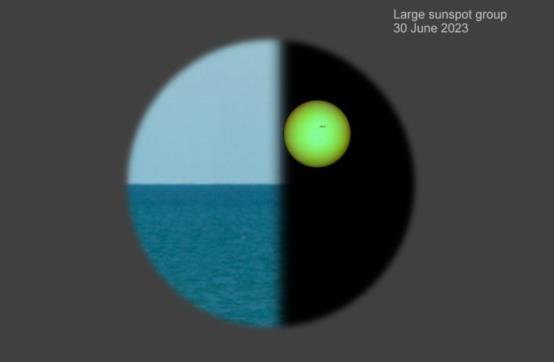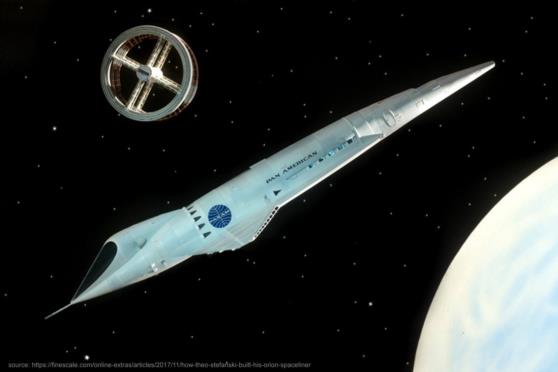
NavList:
A Community Devoted to the Preservation and Practice of Celestial Navigation and Other Methods of Traditional Wayfinding
From: Frank Reed
Date: 2023 Jun 30, 08:49 -0700
There's a large sunspot group on the Sun right now that is visible naked-eye when the Sun is dimmed by extinction at sunset or by haze, smoke, etc. Easy to observe with a sextant with shades down and as little as a 2x scope [simulated sextant view in attached image]. Can you measure the angular size of the sunspot? What then is its size in miles or kilometers? For small angles (up to about 5° easily) angles, physical sizes, and distances are related by the basic relationship:
(angle m.o.a.)/3438 = size/distance.
If a sunspot group is 3 minutes of arc across (E/W) and 1 minute of arc tall (N/S) then its larger dimension is given by
3'/3438 = size/(1 AU),
or
size = (3/3438) × 1AU,
where you can pick your favorite units for 1 "astronomical unit" (*).
But wait... That's not the Sun's current distance from the Sun. Rather 1 AU is very close to the "mean" distance. We can correct that by knowing the Sun's SD today and comparing to the mean. The SD on any day of the year is given, very nearly, by 16.00 + 0.27×cos(d-4) where d is the day count in the year. Today, June 30, is day 180 (or is it day 181? ...does it matter??), That makes the SD today 15.73' which is then 98.3% of the mean (16.00). The Sun's size angular is smaller so the distance is greater by the inverse fraction making the calculated physical size of the sunspot group greater by 1.7%. Naturally you can't measure the angular size or really even decide where the sunspot group begins to better than perhaps 5% so all of this is just computation trivia. But it's nice to know that we can safely ignore the changing distance.
Frank Reed
PS: 1 AU is about 93 million miles or by definition 149.598×10⁶ km (to six significant figures) . How many nautical miles? That's easy. 100km is 54 n.m. almost exactly so divide 149.598 by 100 and multiply by 54. That makes 80.78 million nautical miles. I can't recall ever having seen 1AU specified in nautical miles. But maybe when "Pan Am" starts flying in interplanetary space, they'll bring along the aviation standard. :)








